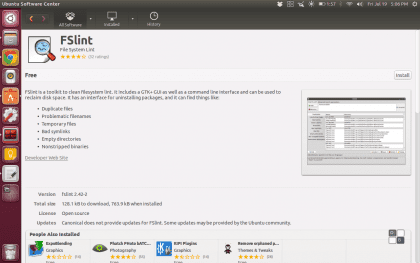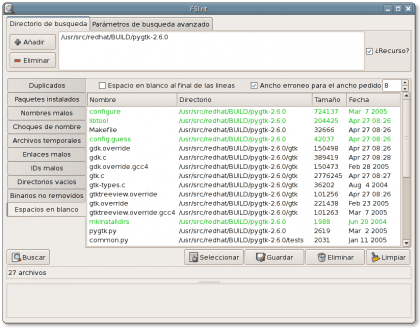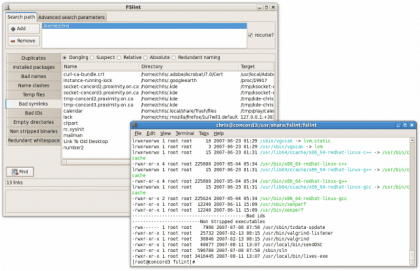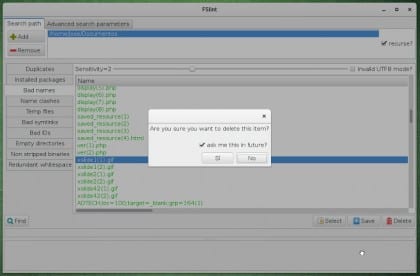fslint It is a magnificent and extremely useful tool and it will be very helpful when we go to organize our hard drive, since it facilitates the task of locate duplicate files or information, and if necessary, eliminate those that only waste space.
The program fslint has a GTK + graphical interface very intuitive and with which we will not have more complications when using it, if you are a more advanced user in Linux you can use this tool from the terminal and quickly search for all files that are duplicated on the system regardless of their origin or what type of files they are (including temporary ones).
With this tool we can not only quickly locate duplicate files, we can also carry out other tasks such as checking and / or eliminating:
- Installed packages
- Wrong names
- Wrong IDs
- Name clashes
- Empty directories
- Binaries with debugging information
- Blanks
The search for Fslint starts by default in our home directory, although we can also choose which folder we want it to analyze for duplicate files, and indicate which path to follow if we want to exclude certain locations.
The algorithm that Fslint works with to check if a file is actually hosted in various locations on our hard drive is extremely exhaustive. And so that an annoying loss of information does not occur due to some confusion, FSlint begins a discard process and identifies the files through attributes such as their unique size.
It will then go through the files to check the integrity of each one. In the same way, it executes a series of verifications relying on other tools such as sha1sum and md5sum.
Already when search ends, shows us a list with the results and in which we can see not only the name of duplicate files, but we can also see their route, the date of their last modification and the size they occupy.
Something that is necessary to highlight is that the deletion of those duplicate files it is not automatic or instantaneous, we must use the designated button for it. And if we need the services of Fslint for another task, we must select the option we need before starting the searchThis is because the results shown at the end of the process are not collective but are separated by the scope of the search.
This is really a job very well done, a very complete tool with which to organize our files and all our digital information is something very simple, which we can do in less time and in a more efficient way to get rid of everything we do not need .
If you want more information about Fslint here is where you will find it and here is the file Tar.gz.
To download it for ArchLinux.
Pacman-S fslint
To download it for Debian.
aptitudeinstallfslint
To download it for Fedora.
yuminstallfslint





just say that for archlinux it is not in the official repositories, that is, it cannot be installed with pacman, it must be installed from the AUR for example yaourt -S fslint
all the best
If you want for console, try fdupes. You just have to pass the folder where you start searching.
Thank you, arrive at the right time 🙂
By the way, fedora package manager change in the new version. Instead of yum it now uses an improved version called dnf.
Investigate how it is used on the web page.
Let's see if you can tell me if the application is capable of doing the following: two identical files, in different folders, but with the name slightly changed. Example. «01 Hello.mp3 and« Hello.mp3 ». Would you recognize it as a duplicate file? Thank you very much and greetings.